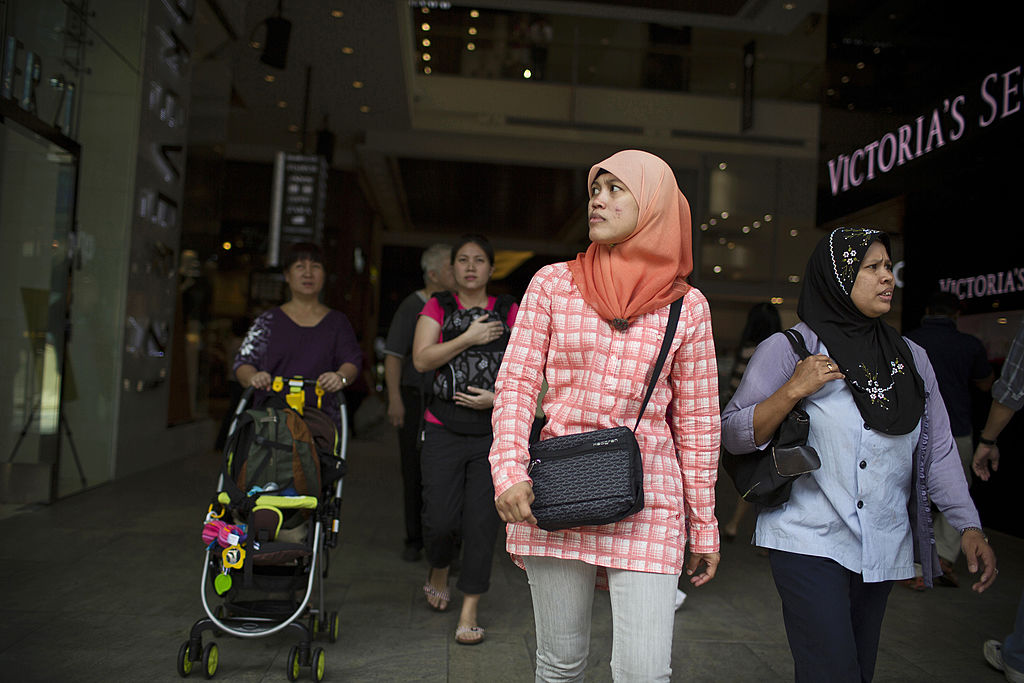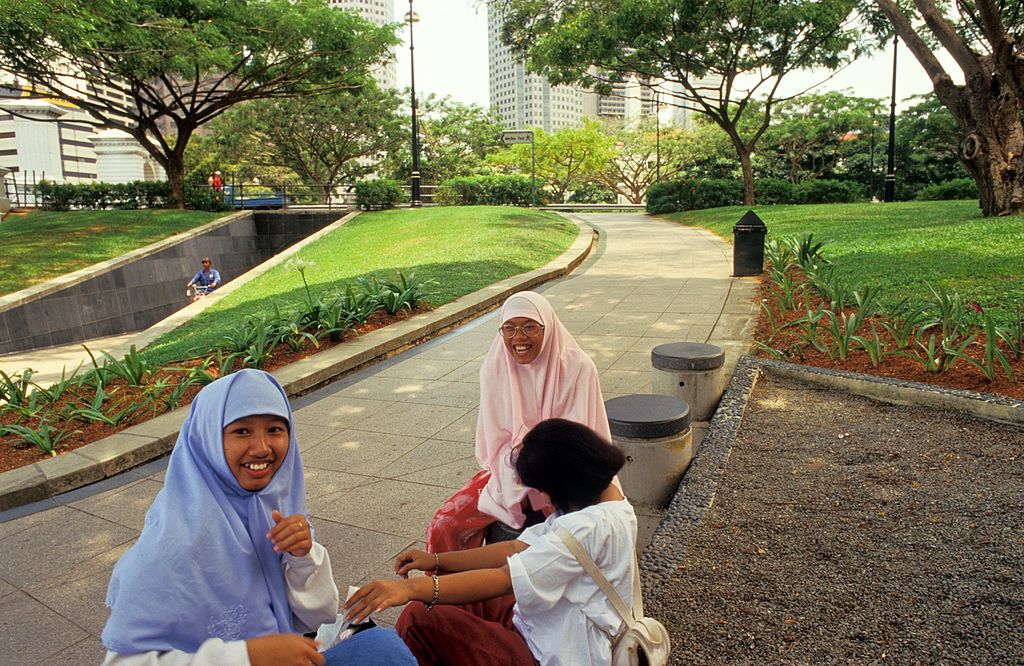The debate regarding the wearing of the tudung among Muslim women in Singapore is an extremely complex one.
In fact, many of us who *think* we know what it's all about and what the concerns are regarding the issue probably don't really, especially if we're not among the people who would choose to put one on.
And you might come to this realisation and heightened understanding — especially when it comes to the question of why Muslim women choose to wear the hijab (in Arabic) or tudung (in Malay) — after reading this explanatory Facebook post on the topic by Singaporean poet and playwright Alfian Sa'at.
Because it's pretty long, though, we took a stab at breaking down the key points he makes for you:
1. Raising the issue has become a tussle for "legitimacy" in minority rights representation, when it shouldn't be.
This means that in Singapore parliament and in politics, the topic of whether or not women should be allowed to wear the tudung for front-line public service work has become in and of itself a tool for proving that the person who brings it up is adequately representing the concerns and rights of the Muslim community.
Regrettably, as Alfian pointed out, the debate now centres not on whether hijabs should be allowed in front-line work, but on how the debate should be had: whether behind closed doors or out front and centre, in Parliament, for instance.
Which at the end of the day, regardless of which position you take in that debate, is distracting from what should obviously be the real conversation at hand.
2. Wearing a tudung involves more than just putting on a headscarf.
 Women exit a shopping mall on Orchard Road in Singapore, on Wednesday, March 20, 2013. Singapore's economy may expand 2.8% in 2013, Monetary Authority of Singapore's March quarterly survey showed. Photographer: Brent Lewin/Bloomberg via Getty Images
Women exit a shopping mall on Orchard Road in Singapore, on Wednesday, March 20, 2013. Singapore's economy may expand 2.8% in 2013, Monetary Authority of Singapore's March quarterly survey showed. Photographer: Brent Lewin/Bloomberg via Getty Images
It involves full-body coverage — exposing only one's face and hands. This means long sleeves and long pants or full skirts, and of course, complete concealment of one's chest and neck too.
This point, he said, is important because accommodating the tudung in public service frontline uniforms will require changing tops and bottoms to be long-sleeved and reaching the ankles respectively, too.
And now, on to some reasons why women wear the tudung. The first thing Alfian stressed was that there are multiple, varying reasons why a woman might choose to put one on, but a leading purpose, especially in Singapore, is:
3. For comfort and freedom.
"Freedom", he writes, refers to a freedom from being looked at by people who might objectify a woman's body or appearance in any way.
By covering everything up, a Muslim lady frees herself from potential lechers, perverts, the burden of being an object of, or cause of, someone else's temptation, for instance — or it could simply be so she won't be judged by how she looks, whether positively or negatively.
It could be, as Alfian phrased it, "a gentle request that one is evaluated on the basis of something other than mere appearance".
"Comfort" comes, too, with the feeling of psychological and spiritual comfort that a Muslimah is acting in line with her religious beliefs — not to say, of course, that any Muslim lady who does not don the tudung is not acting in accordance with her beliefs.
4. To present themselves as "Muslim marriage material".
For some women, the action of covering themselves up fully demonstrates their suitability as a wife to perhaps more conservative Muslim men looking for a wife who feels doing so is important, too.
5. To demonstrate that they can be both "people of God" and "people of the world".
Alfian explained an idea that might be challenging for non-Muslims to grasp: that a person can be both a person of God (like Catholic nuns, for instance, who in some instances wear veils, depending on which order they are from) and of the world (lay people) in the Islamic faith.
The tudung, he says, allows them the opportunity to do this — and it's therefore perfectly okay for a Muslimah to wear a brightly-coloured tudung, style it as she wishes, and put on makeup too, as many of us will have seen before.
Now, one prevailing concern is that the increasing presence of women wearing tudungs in our society is evidence of growing conservatism and separatism on the part of Muslims and the Muslim community from other Singaporeans.
Here's Alfian's counter to that:
6. The wearing of tudungs is actually an answer to conservatism, for some — a statement of freedom of movement.
Alfian explained that in the past, a Muslim woman's place was deemed to be the home, where she kept house, became a mother and raised children, while the husband and father was the breadwinner for the family. She wasn't supposed to go outside or work, where she would be exposed to or vulnerable to "improper" interactions with others.
But now that a woman is able to cover herself with a hijab and full-sleeved attire, she has the freedom to move wherever she wants, and to work and earn her own keep, too, with the above-mentioned comfort and freedom that allows her to remain faithful to her beliefs.
All this, though, could possibly be summed up in his last paragraph:
"There are women among our fellow citizens who choose to wear the hijab when they are out in public, or in their working environments. It makes them feel comfortable, secure, peaceful and at ease with themselves. What can we do, as a multicultural, multi-religious society, to respect that choice and ensure their wellbeing?"
Read Alfian's full post here:
If you like what you read, follow us on Facebook and Twitter to get the latest updates.
